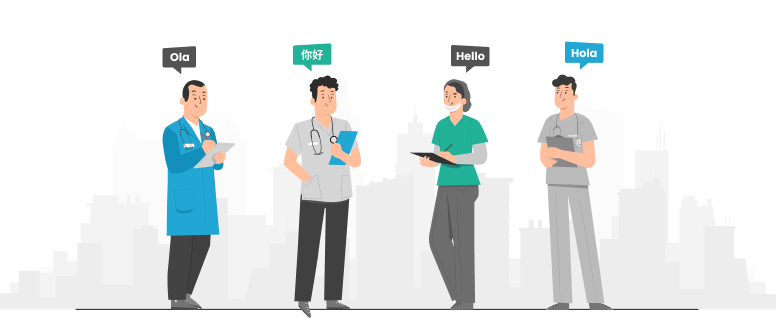In medical texts figurative expressions are dominantly used for the referential purpose, and most images in medical figurative expressions are universal as people share basically the same cognition of images and experience of feelings.
Therefore most medical figurative words are translated literally, for example, “bullet embolism”(弹头栓子), “honeycomb tissue”(蜂窝组织), “saddle back”(鞍背), and “trigger finger”(扳机指).
While on the other hand it is also true that people in different parts of the world use different images in describing the same sense they share, which is not seldom seen in medical context. Cite for example, that a roughness of the skin produced by erection of its papillae(毛乳头)especially from coldness, fear, or a sudden feeling of excitement is called “goose flesh” in medical English, however, if this phrase is translated literally into ”鹅皮疙瘩”, it will make no sense to Chinese people, who choose “鸡皮疙瘩” in describing the same case.
Similarly the translator should seek out equivalent Chinese for medical words like “pigeon chest” as “鸡胸” rather than “鸽胸”, “goose gait” as “鸭步” in stead of “鹅步”, “dumb-bell tumor” as “葫芦状瘤” compared with “哑铃状瘤”, because they fit into Chinese peoples thinking and imaging patterns.
Read Also: Medical translation services
The last aspect in analyzing and translating medical English figurative expressions is that some English words are likely to arouse unwanted associations in Chinese, hence fail to convey the accurate message and do not harmonize with the style of medical texts, which should be free of emotion and association.
Take for example, “tiger heart”, a condition of the heart in which the inner surface of the ventricular(心室的)wall and the papillary(乳突状的)muscles are streaked and spotted. The literal translation of “虎样心” or “虎心” will most likely arouse association of viciousness and cold-heartedness in Chinese people, therefore efforts must be made to avoid misunderstanding, and the neutral term “虎斑心” is the solution. In this way the translator could achieve the ultimate purpose of closest natural equivalent acceptable and understandable to the Chinese reader.
In conclusion, to find appropriate target language equivalent to source language is highly demanding also most rewarding in medical translation. It requires translators good command of linguistic as well as cultural knowledge in addition to considerable familiarity with medical knowledge, as is required in the first principle.
Take a look at how we helped our client by localizing their project for Life Sciences Industry. Click here to read the complete case study


